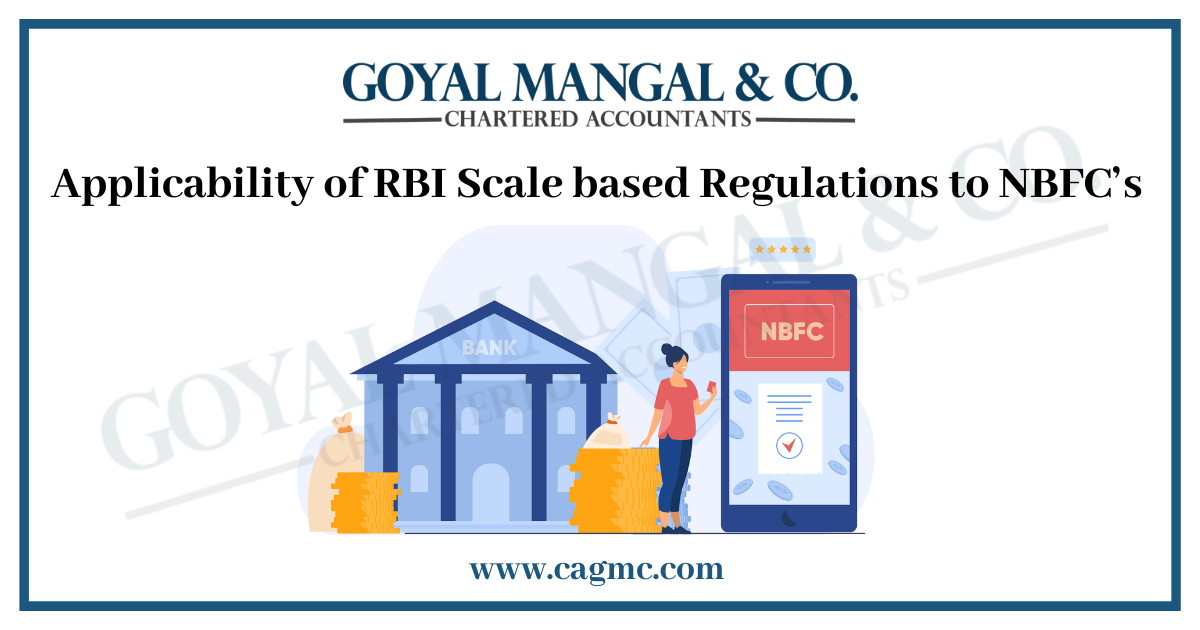
The RBI published a discussion paper in January 2021 outlining a redesigned scale-based regulatory framework for NBFCs, solicited feedback on it. The RBI Scale-based Regulations for NBFCs went into effect on October 1st, 2022. In terms of the Base layer, Middle layer, and Upper layer with reference to the Individual Asset Size and Group Asset Size of Non-Banking Financial Institution, there is some ambiguity per se. Let’s attempt to comprehend and explain the same in this blog.
Quick Look
In addition to the current nomenclature, NBFCs would be divided into four separate levels (Base, Middle, Upper, and Top) according to a variety of factors, including as size and system connectivity. The scale-based method can be visualized as a pyramid, with the base layer having the least amount of control and the highest layer having the most.
Meaning of Non-Banking Financial Institution
A financial institution known as a Non-Banking Financial Company (NBFC) offers services like those offered by banks but does not hold a banking license and is not subject to national or international banking regulatory bodies’ oversight.
Most banking services are provided by NBFCs, including loans, credit facilities, finance for private education, retirement planning, money market trading, underwriting of stocks and shares, and other obligations. They are permitted to accept fixed deposits or time deposits but not checking or savings accounts.
Benefits of Non-Banking Financial Institution
In a developing nation like India, where most of the population comes from rural regions, NBFCs are crucial. Commercial banks are typically not online in these places. NBFCs can help in this situation. People who live in these areas can take advantage of their financial services.
Several NBFC benefits are as follows:
- Provides access to finance and loans.
- Invests in instruments for the money market.
- Practice money management through managing stock and share portfolios, among other things.
- Pays for private education and encourages real estate investment.
- Aids in retirement planning Offers advice to businesses on mergers and acquisitions.
- Provides a substitute for banks in situations where borrowing money is necessary.
- NBFCs are faster than banks.
Restrictions on Non-Banking Financial Institution.
Although NBFCs operate largely/almost like commercial banks, the RBI has imposed some restrictions on them. These restrictions comprise.
- Demand deposits aren’t accepted by NBFC from any sources or methods.
- The depositor is not provided with services like deposit insurance.
- They cannot print checks drawn on themselves.
- They cannot participate in the system of payments and settlements.
Non-Banking Financial Institution Regulatory Structure
NBFCs’ regulatory structure will be divided into four layers based on the size, activity, and perceived riskiness of the organization. NBFCs in the base layer are referred to as NBFC-BL (NBFC-BL).
The terms “NBFC – Middle Layer” (NBFC-ML) and “NBFC – Upper Layer” (NBFC-UL), respectively, will be used to refer to NBFCs in the middle layer and upper layer. The Top Layer, often referred to as NBFC-Base Layer (NBFC-TL), is ideally anticipated to be empty.
- Base Layer- The Base Layer will be made up of: Non-deposit taking NBFCs with assets under Rs. 1000 Crores and NBFCs engaged in the following activities that is Peer-to-peer lending platforms, Account aggregators, non-operative financial holding companies, NBFCs that do not use public funds and NBFCs without customer interfaces.
- Middle Layer- All deposit-taking NBFCs (NBFC-Ds), regardless of asset size, non-deposit-taking NBFCs with asset sizes of at least $1 billion, and NBFCs engaging in the following activities shall comprise the Middle Layer. Core Investment Companies (CICs), Housing Finance Companies (HFCs), Infrastructure Finance Companies (NBFC-IFCs), Infrastructure Debt Fund – Non-Banking Financial Companies (IDF-NBFCs), Standalone Primary Dealers (SPDs), and Core Investment Companies (CICs).
- Upper Layer- The NBFCs in the Upper Layer are those that the Reserve Bank has specifically designated as necessitating stricter regulatory requirements based on a set of criteria and scoring methodology described in the Appendix to this circular. Regardless of any other factor, the top ten qualifying NBFCs in terms of asset size will always be in the upper stratum.
- Top Layer- It is great if the Top Layer is vacant. If the Reserve Bank believes that there has been a significant increase in the potential systemic risk from NBFCs in the Upper Layer, this layer may be populated. Such NBFCs will transfer from the Upper Layer to the Top Layer.
Illustrations related to Non-Banking Financial Institution scale-based regulation
Below are the illustrations regarding NBFC scale-based regulation:
- NBFC having asset size of Rs 90 Cr having access to Public Fund of 25 crores, though group asset size is 1520 crores – Even though individually, NBFCs are far below the cap of 1000 Cr in asset size, due to group classification, they will be placed in the Middle layer because they have access to public funds and must abide by RBI Master Direction for Systematically Important regulations.
- NBFC having asset size of Rs 510 Cr having Nil access to Public Fund, though group asset size is 1050 crores – Even when an NBFC individually and collectively exceeds the 500 Cr asset size limit, it will still be considered a Base Layer NBFC because it lacks access to public funds and must abide by the RBI Master Direction for Non-Systematically Important NBFCs laws.
- NBFC having asset size of 1200 crores having Nil access to public Fund and Customer Interface, no group Company exist – NBFC is beyond the threshold of 1000 Cr in assets, but because it lacks access to public funds and customer interference, it will be classified as Base Layer.
If none of the NBFCs listed in the preceding illustration accept deposits. Regardless of the size of their assets, all deposit taking NBFCs belong in the middle layer.
The term “public funds” refers to money raised directly or indirectly through public deposits, corporate to corporate deposits, bank financing, and all money received from outside sources (commercial papers, debentures, etc.).
It does not, however, include money raised through the issuance of instruments that are compulsorily convertible into equity shares within a five-year window. There are no CICs (Core Investment Companies) among the NBFCs.
It is crucial for a Group to determine whether their Company is a CIC before making any plans to categorize and seek compliance; otherwise, it may be too late to correct the default.
Takeaway
In addition to limiting regulatory arbitrage with banks, these scale-based laws tighten and integrate regulations across categories, especially for the Upper Layer NBFCs. Going forward, it is anticipated that these adjustments will make the sector more resilient.
However, the RBI has also acknowledged that NBFCs have made a sizable contribution to the underbanked market. Comparing this scale-based approach to the one-size-fits-all paradigm, it is more practical.
Tighter restrictions would have a severe impact on smaller NBFCs, which often serve the bottom of the population’s pyramid. This would be counterproductive to their main objective of promoting financial inclusion.


